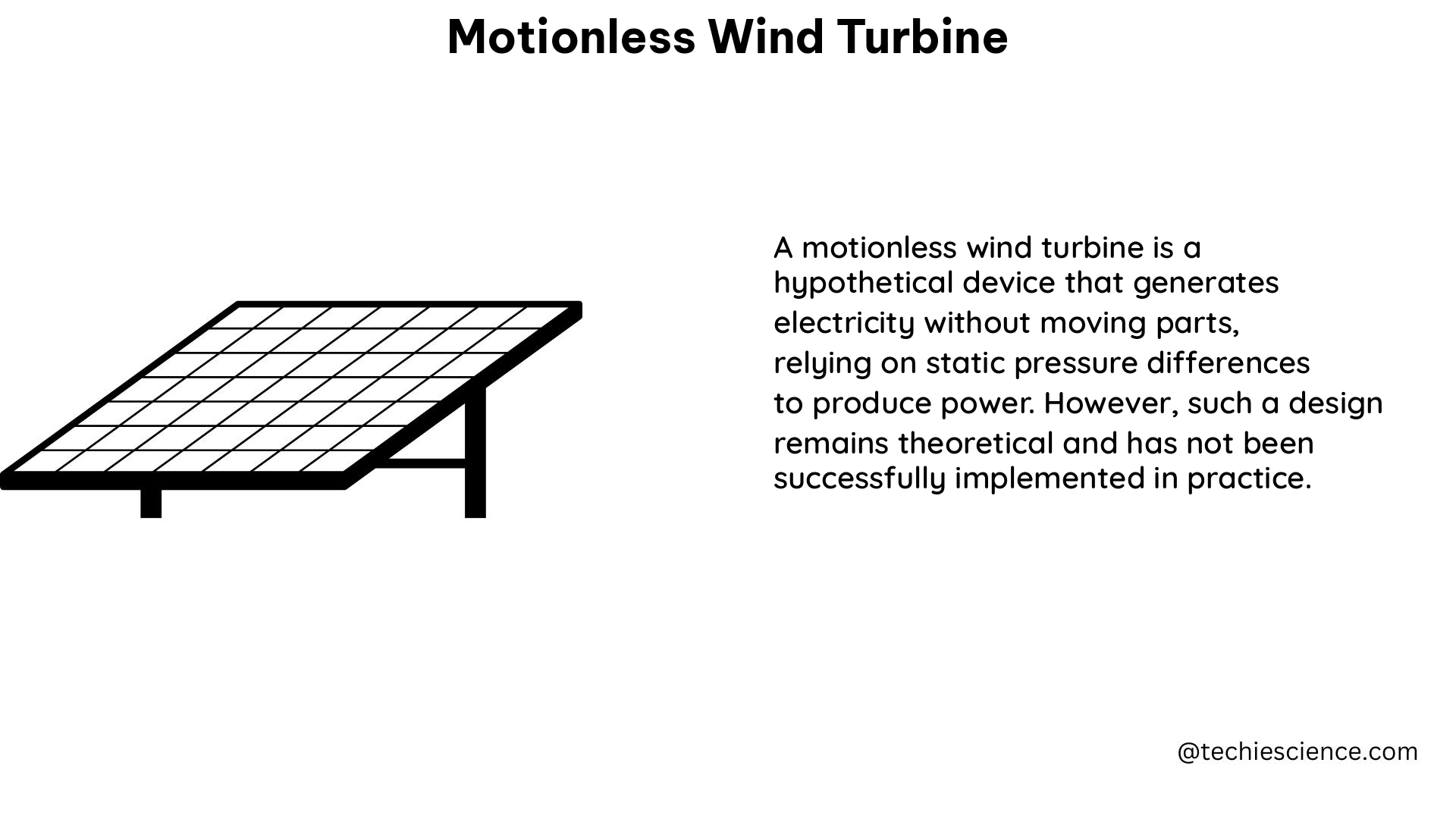Motionless wind turbines, such as the Aeromine Technologies’ system, are a novel approach to harnessing wind energy. They are designed around well-known principles and built with durable, sustainable materials. The patented aerodynamic design captures and amplifies building airflow, generating a low pressure that draws air up through the intake and internal generator.
Understanding the Aerodynamic Design
The key to the motionless wind turbine’s operation lies in its unique aerodynamic design. The system is engineered to leverage the natural airflow patterns around buildings, rather than relying on the wind’s direct force. This is achieved through a carefully crafted intake and internal structure that creates a low-pressure zone, drawing air through the turbine and powering the generator.
Intake Design
- The intake is designed with a specific shape and angle to capture and funnel the building’s airflow effectively.
- The intake’s dimensions are optimized to maximize the air velocity and volume entering the turbine.
- Computational Fluid Dynamics (CFD) simulations are used to model the airflow patterns and refine the intake design for optimal performance.
Internal Structure
- The internal components of the motionless wind turbine are arranged to create a low-pressure zone that pulls the air through the system.
- The generator is strategically positioned to harness the kinetic energy of the airflow, converting it into electrical power.
- The internal geometry and materials are engineered to minimize turbulence and maximize efficiency.
Performance Characteristics

Aeromine Technologies claims that a single unit of their motionless wind turbine can provide the same amount of power as up to 16 solar panels. While this claim has not been independently verified, the company has participated in the 2021 AFWERX Reimagining Energy Challenge, where it rated its turbines for 5 kW and estimated that each one could produce 14.3 MWh annually.
Power Output
- The Aeromine motionless wind turbine is rated for a power output of 5 kW.
- According to the company’s estimates, each unit can produce 14.3 MWh of electricity per year.
- This power output is comparable to a 21-panel rooftop home solar system, which generally produces about 4.5 MWh of electricity per year.
Wind Speed Requirements
- Motionless wind turbines can operate with wind speeds as low as 5 mph (8 kph), which is lower than the 9 mph (15 kph) wind speed required for conventional turbines to operate.
- This makes them well-suited for areas with relatively low wind speeds, such as urban and suburban environments.
Cost and Installation
The cost of installing a motionless wind turbine is an important consideration for potential users. A 2019 analysis by Aeromine, Sandia National Laboratories, and Texas Tech University estimated the installation cost at $2,400 per kW.
Installation Costs
- The estimated installation cost of the Aeromine motionless wind turbine is $2,400 per kW.
- This is higher than the average cost of constructing solar panels of all types, which was $1,655 per kW in 2020.
- However, the lack of moving parts and minimal maintenance requirements may offset the higher initial cost over the long term.
Suitable Installations
- Motionless wind turbines are best suited for large, flat rooftop buildings like warehouses, data centers, and big-box retail stores.
- These types of buildings often have consistent wind patterns, which is ideal for the motionless wind turbine’s design.
- The turbines can be easily integrated into the building’s infrastructure, minimizing the impact on the overall structure.
Advantages and Considerations
The key advantages of motionless wind turbines include their quiet operation, low maintenance requirements, and minimal impact on wildlife. However, there are still some considerations to keep in mind.
Advantages
- Lack of visible moving parts makes the turbines run quietly, reducing noise pollution.
- Low maintenance requirements due to the absence of mechanical components.
- Minimal impact on wildlife, as there are no spinning blades to pose a threat.
- Avoidance of environmentally unfriendly materials like silicon and rare earth magnets.
Considerations
- The performance claims made by Aeromine Technologies have not been independently verified, and more data is needed to assess the real-world efficiency of these systems.
- The higher installation cost compared to solar panels may be a barrier for some users, although the long-term savings from reduced maintenance could offset this.
- The suitability of motionless wind turbines is limited to large, flat-roofed buildings with consistent wind patterns, which may not be available in all locations.
Conclusion
Motionless wind turbines offer a promising alternative to conventional wind turbines, with advantages such as quiet operation, low maintenance, and minimal impact on wildlife. While there is still a need for more quantifiable data on their performance, the technology shows potential for distributed wind energy generation, particularly in urban and suburban environments. As the field of renewable energy continues to evolve, motionless wind turbines may play an increasingly important role in the quest for sustainable and efficient power solutions.
Reference:
– Aeromine Technologies
– Texas A&M University News
– Undecided MF
– Pico Technology
– ResearchGate

The lambdageeks.com Core SME Team is a group of experienced subject matter experts from diverse scientific and technical fields including Physics, Chemistry, Technology,Electronics & Electrical Engineering, Automotive, Mechanical Engineering. Our team collaborates to create high-quality, well-researched articles on a wide range of science and technology topics for the lambdageeks.com website.
All Our Senior SME are having more than 7 Years of experience in the respective fields . They are either Working Industry Professionals or assocaited With different Universities. Refer Our Authors Page to get to know About our Core SMEs.